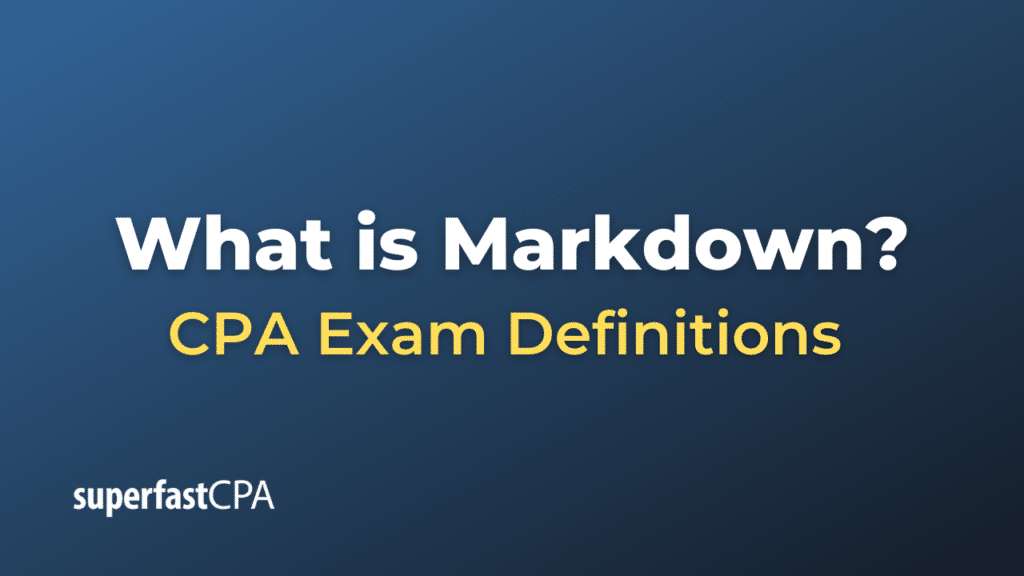Markdown
In the context of accounting and business, a markdown is a permanent reduction in the selling price of merchandise, usually due to slow sales, a desire to clear out old inventory, or a competitive pricing situation. Markdowns are a common practice in retail businesses, especially for items like clothing that have a short selling season and can quickly become outdated.
For example, a store may buy a product at a wholesale price of $5 and initially sell it at a retail price of $10. If the product isn’t selling as expected, the store may decide to mark down the price to $7 to encourage customers to purchase the product.
From an accounting perspective, the markdown results in a lower gross margin on each unit sold (original selling price minus cost), but it may increase total profit if the markdown leads to a significant increase in the quantity sold. In addition, markdowns can free up cash and space for new inventory.
It’s worth noting that markdown is different from a sale or promotional discount. Markdowns are permanent price reductions, whereas sales or promotional discounts are temporary price reductions intended to boost sales over a short period.
Example of Markdown
Let’s consider a clothing retail store that is selling a particular style of jeans.
The retail store originally buys these jeans at a wholesale price of $30 each. They price the jeans to sell at $60, hoping to make a $30 profit on each pair sold.
However, after a few weeks, they notice that the jeans are not selling as quickly as expected. To avoid being stuck with a large amount of unsold inventory, the retailer decides to mark down the price of the jeans to $45 each.
From an accounting perspective, this markdown means the profit per pair of jeans sold is now only $15 ($45 selling price – $30 cost) compared to the original $30. This reduction can be seen as a loss of potential profit, but it’s necessary to move the inventory and recover the costs.
If, after the markdown, the jeans begin selling more quickly, the total profit from selling all the jeans might be higher than if the retailer had kept the original price but sold fewer units. This can also clear out the inventory, freeing up space and cash to invest in new, possibly more popular, items.
So while each sale results in a smaller margin, the overall impact of the markdown can be positive for the retailer if it results in increased sales volume and improved inventory turnover.














